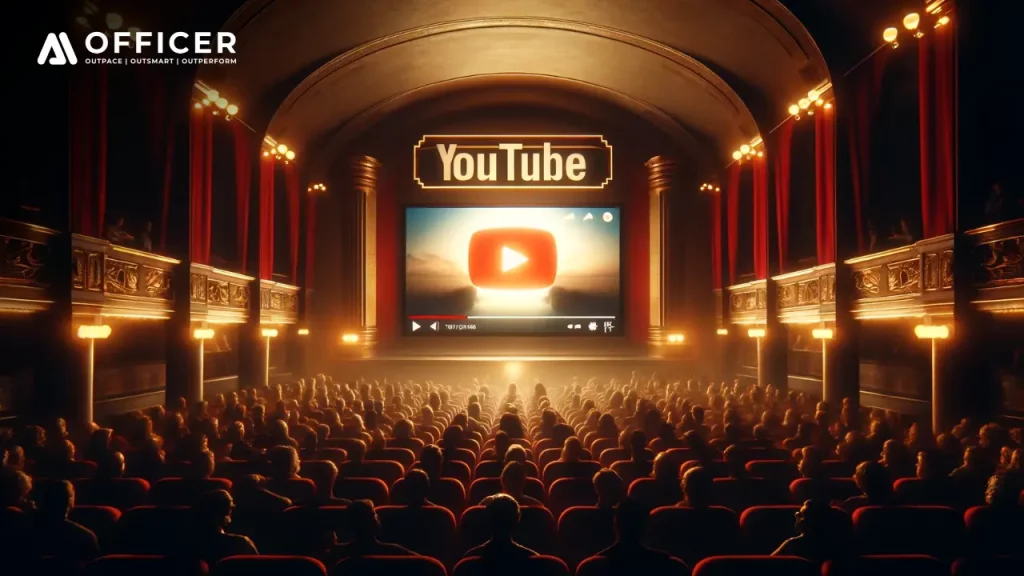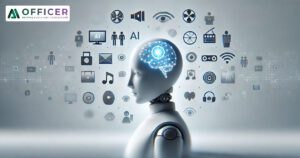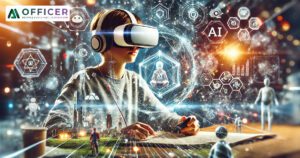
Ever get that creepy feeling while watching a YouTube animation? The movements are smooth, the characters expressive, but something just feels…wrong?
You might be witnessing the future of animation, where Artificial Intelligence (AI) is taking the reins. But can the human eye truly tell the difference between AI-crafted and traditionally animated clips?
AI ANIMATION : A GAME CHANGER WITH GROWING PAINS
AI animation is no longer relegated to research papers. Companies like Google’s DeepMind and NVIDIA’s Holodeck are developing powerful algorithms like RunwayML’s “Character Animator” and “Imagen Video” that can generate animation with impressive speed and quality.
These algorithms devour vast troves of animation data, meticulously learning the intricate nuances of movement, physics and character design. The result? Animation that can be disturbingly close to the real deal.
<THE UNCANNY VALLEY> WHEN AI GETS A SMIDGE TOO REAL
But here’s the twist : there’s a psychological phenomenon called the “uncanny valley.” This theory suggests that as human-like creations get closer to real humans in appearance, they become more unsettling. The same principle applies to animation. When AI animation gets too close to traditional animation, it might trigger a sense of unease in viewers.
So, Can You Spot the AI? HERE’S YOUR DECODER RING
The ability to discern AI animation depends on several factors :
- The Sophistication of the AI : More advanced algorithms like those powering tools like Animaker [AI animation tool] can create animation that’s difficult to distinguish from traditional methods.
- The Style of Animation : Certain animation styles, like simpler cartoons, might be easier for AI tools like Synthesia to replicate than complex, hyper-realistic ones.
- Your Keen Eye for Detail : Some viewers are more attuned to subtle differences in movement, facial expressions, and lighting, which can be giveaways for AI animation.
Here are some potential red flags that an animation might be AI-generated.
- Repetitive movements : AI might struggle with complex, nuanced movements, leading to repetitive loops or unnatural stiffness. Watch for characters with jerky movements or limbs that don’t quite follow through on actions.
- Eyes that lack soul : Eyes are often the window to the soul, and AI-generated eyes can sometimes appear vacant or lifeless. Look for characters with unblinking stares or eyes that don’t quite emote the intended emotion.
- Unnatural lighting or physics : AI might not perfectly capture the subtleties of lighting and physics, leading to scenes that feel slightly off. Watch for characters with uneven shadows, hair that defies gravity, or objects that move in an unrealistic way.
PROMPTING STYLES – THE SECRET SAUCE OF BELIEVABLE AI ANIMATION
The magic behind compelling AI animation lies not just in the algorithms themselves, but also in the art of prompting. Prompts are essentially instructions you give the AI, detailing the style, characters, actions and overall feel of the animation. Here’s where things get interesting :
- The Specificity Trap : Highly specific prompts can backfire. While details are important, leaving some room for AI interpretation can lead to more natural-looking results. Let the AI add its own creative flair within your defined parameters.
- The Emotional Tug-of-War : Evoking emotions in AI animation is still a challenge. While tools like Braid are making strides, complex emotions might be misinterpreted or fall flat. Focus on basic emotions like happiness or surprise and refine your prompts for better results.
- The Narrative Loophole : AI animation excels at creating short, visually stunning clips. However, crafting a cohesive narrative with a clear beginning, middle and end can be tricky. Consider using AI animation for specific scenes or as a storyboard starting point, and weave in traditional animation elements for a seamless narrative flow.
Big names are already hopping on the AI animation bandwagon, with mixed results.
For instance, YouTuber Corridor Crew used RunwayML’s tools to create a flawlessly animated version of their popular “Stuff Made Here” series. The results were impressive, showcasing the potential of AI animation. However, some viewers pointed out a lack of emotional depth in the characters, highlighting the challenges with prompting styles.
THE LOOPHOLE LOWDOWN : HOW VIEWERS MIGHT REACT
While some viewers might be completely oblivious to AI-generated animation, others will be actively searching for the telltale signs.
Here’s what they might be looking for :
- The “uncanny valley” effect : As mentioned earlier, viewers might feel a sense of unease if the AI animation gets too close to traditional animation but falls short in capturing the subtleties of human movement and emotion.
- The “deja vu” glitch : Since AI animation tools are trained on massive datasets of existing animation, viewers might spot recurring stylistic elements or character tropes that feel derivative.
- The “inconsistent quality” conundrum : The effectiveness of AI animation still hinges on the chosen tool, the user’s prompting skills and the complexity of the animation itself. This can lead to inconsistencies in quality within a single video, raising red flags for viewers.
Despite the current limitations, the future of AI animation is bright.
Here’s what we can expect –
- Evolving Algorithms : As AI algorithms become more sophisticated, they’ll be able to capture the nuances of human movement and emotion with greater accuracy, potentially erasing the uncanny valley altogether.
- Advanced Prompting Techniques : The development of more intuitive and user-friendly prompting interfaces will empower creators to guide the AI towards more nuanced and emotionally resonant animation.
- Hybrid Workflows : The future lies in a marriage of AI and traditional animation techniques. AI can handle repetitive tasks like background generation and basic character movement, freeing up human animators to focus on storytelling, character development and emotional expression.
At AI Officer, we’re passionate about helping businesses of all sizes leverage the power of AI. We offer a range of AI consulting solutions, including staying at the forefront of AI animation trends. We can help you identify the right AI animation tools for your needs, develop effective prompting strategies and integrate AI animation into your existing workflow.
While some viewers might still be able to spot the differences, AI animation is rapidly reaching a point where it can produce stunningly realistic visuals.
Whether you’re a YouTuber seeking to elevate your content creation or a business looking to explore innovative marketing strategies, AI animation has the potential to revolutionize your approach.
Let AI Officer be your trusted advisor on this exciting journey.
Stay tuned to our blog for more insights on the ever-expanding world of AI!




